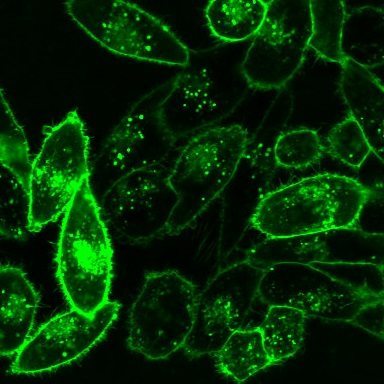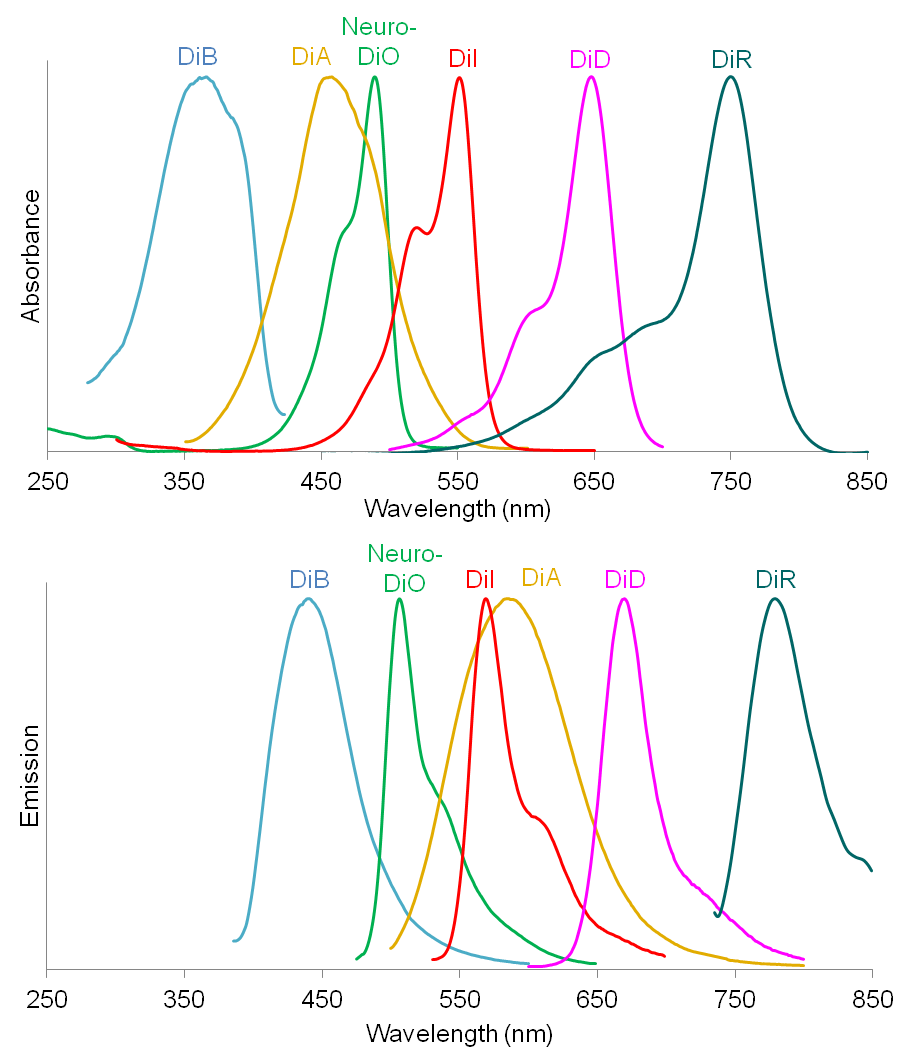Neuro-DiI
Neuro-DiI was developed at Biotium as an alternative to the widely used fluorescent membrane probe DiI. Neuro-DiI has structural features that may make the probe diffuse faster than DiI on cell membranes and also may result in a more stable labeling.
Please fill in the inquiry form and we will contact you shortly.
Wishlist updated! View wishlist
Product Description
Neuro-DiI was developed at Biotium as an alternative to the widely used fluorescent membrane probe DiI. Like Dilinoleyl DiI, Neuro-DiI has structural features that may make the probe diffuse faster than DiI on cell membranes. However, Neuro-DiI dye has saturated carbon chains, making it more hydrophobic than Dilinoleyl DiI, for potentially more stable labeling with less dye transfer between cells. Neuro-DiI has nearly identical absorption and emission wavelengths to those of DiI. We also offer Neuro-DiI in Vegetable Oil for microinjection studies. Also see our CellBrite™ Orange Cytoplasmic Membrane Dye, a ready-to-use dye solution for cell labeling.
- λEx/λEm (MeOH) = 549/565 nm
- ε = 148,000
- Red solid soluble at 1-2 mM (with heating) in DMF, DMSO, or ethanol
- Soluble at 1-2 mM in vegetable oil with heating and sonication
- Store at 4°C and protect from light
- C67H115IN2
- MW: 1072
References
1. Proc Natl Acad Sci (2006) Feb 21;103(8):2938-42 doi: 10.1073/pnas.0511159103
2. J Neurosci. (2013) Oct 23;33(43):16853-64 doi: 10.1523/JNEUROSCI.1844-13.2013
3. PLoS One (2013) May 31;8(5):e64907 doi: 10.1371/journal.pone.0064907
4. J Neurosci (2013) Apr 10;33(15):6454-9 doi: 10.1523/JNEUROSCI.0178-13.2013
5. Bioconjug Chem (2014) Dec 17;25(12):2134-43 doi: 10.1021/bc500465j
6. Front Syst Neurosci (2016) Nov 15;10:95 doi: 10.3389/fnsys.2016.00095





